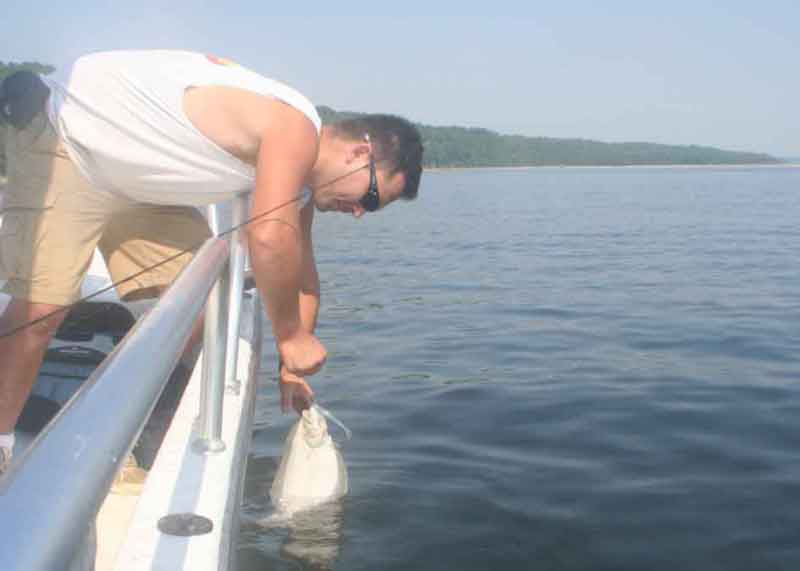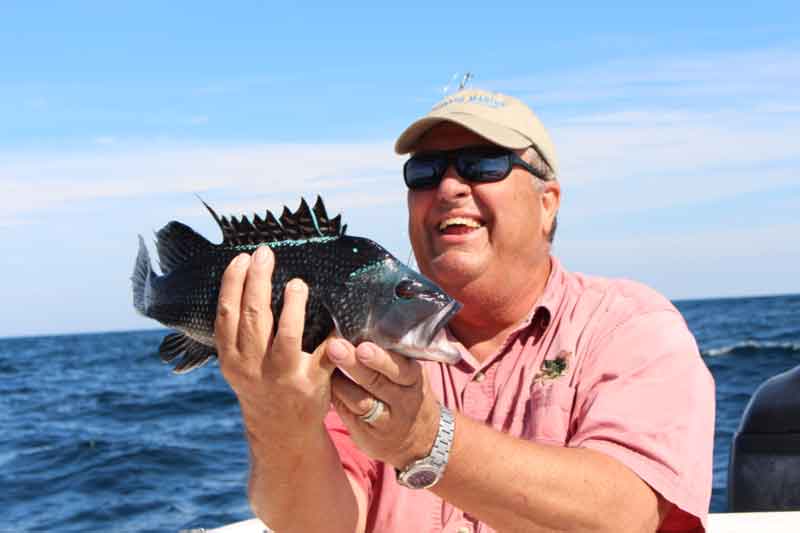Editor’s Note: As striped bass regulations are rewritten in Maryland, Virginia, and other Mid-Atlantic states, the same absence of any real scientific studies – and the use instead of MRIP’s farcical “best available science” – stands to torpedo other fisheries as well. You thought that while stripers recovered a bit you might do more flounder or sea bass fishing? Think again. While it looks like 2020 will be status quo, it’s impossible to say what harm MRIP’s numbers will bring in the future…

According to Marine Recreational Information Program (MRIP) numbers, recreational fishers are due a 31-percent cut in summer flounder quota in 2020. And when it comes to black sea bass, in the coming year the commercial black sea bass quota would be increased upwards of 70-percent while the recreational quota takes a 29-percent hit. If MRIP's numbers were used, I would have to offer my clients five sea bass at 15-inches in 2020. I strongly suspect my business model, despite 40 years on the water, would swiftly collapse given such a restriction. This, while NOAA proudly tells Congress they’ve “rebuilt sea bass in the Mid-Atlantic 300-percent.”
The MRIP Mess
NOAA's new recreational catch estimates under MRIP have become so untrue and so incredibly high that they've caused fishery scientists to inflate marine fish populations to the point where managers must increase commercial quotas by a huge proportion. Despite new population heights and vastly larger commercial quotas, recreational anglers may shortly witness their most restrictive regulations ever – regulations which may very well close many fishing and fishing-associated businesses.
The Root of the Problem
Since 2004, private boat and sometimes shore-angler recreational catch estimates rose steadily. Then along came MRIP, instituted in a well-meaning attempt to get a better handle on just how many fish recreational anglers catch. Thanks to MRIP those estimates rose astronomically, even while party- and charter-boat catch estimates remained steady.
Why? Management and fisheries scientists know this is a perfect example of ‘GIGO’ – Garbage In, Garbage Out. The proof is plain to see; here are a couple quick examples of MRIP's statistical finery.
- In May/June 2019 the average striped bass caught from Maine's Shore was 39-pounds and 46-inches long.
- In Delaware this past summer shore-caught black sea bass were that state's largest (bigger than the average bass caught from a boat?) at 1.5-pounds apiece, and in 2013 there were 2.4-times more summer flounder caught from shore than by all the party- and charter-boats.
- New Jersey shoreline anglers catching tautog had a ridiculous 74,000 fish estimated from March/April 2010 – this catch made in a time when shore anglers are not catching tog at all. Then MRIP claimed “Oh no! It wasn’t 74,000 – it was 173,000 tog.” New Jersey’s jetty tautog begin to bite at the very end of April, but yeah. Umm, okay MRIP, a hundred thousand more absolutely impossible tog… Today the number sits at a mind-blowing 341,000 fish after the latest MRIP recalibration. That’s far more than all U.S. commercial and for-hire fishermen catch all year.
- That’s a lot of tog caught from shore in New Jersey when they’re not biting. But the same sort of nonsense goes in Maryland, where according to MRIP shore anglers caught 178,000 keeper sea bass averaging 1.4-pounds apiece in 2016. This estimate is 100-percent horsefeathers. We’ve found one angler in Maryland who claims to have caught a (one) keeper sea bass from shore in 2016. Have you ever seen it happen, or can you think of anyone you know who might have contributed to those 178,000 fish by catching a single keeper black sea bass from shore in this state? Horsefeathers.
Don’t forget, these are the same folks assigning a nine-percent coastwide hooking mortality rate to striped bass catch and release anglers as they cite the Diodati and Richards study, which states in its own conclusion, “our present model would not be sufficient for estimating coastwide hooking mortality.”
Yet the law says use MRIP data. Any estimate might have a species of fish piled to the moon with not an eyebrow raised anywhere in the system, but regulators follow the letter of the law. MRIP is NOAA's only current source of recreational catch estimates, so that’s what they use. MRIP calls the ball on whether we have remained at or below our recreational quotas and we’re always accused of going over. Way over. They know it’s wrong.
The Results of MRIP
Most anglers in this area are already hearing about what’s going on with rockfish. But MRIP and the impact of its absurdities are not limited to that fishery. If no corrective action is taken, recreational fishers are toast. MRIP shows our catches far, far above allowable levels, so we now have to endure the 'pay back' provisions of the Magnuson-Stevens Act. Recreational regulations may tighten to such extremes that many businesses will fold.

MRIP's got to go. Management and fisheries scientists have no idea what's really happening at sea. MRIP's that bad. Science cannot work with bad inputs, nor can management be fair.
As I have long held about our natural hardbottom reefs in the Mid-Atlantic, if a great deal of habitat has been lost, then restoring historic fish populations becomes impossible. Where our reef fish are concerned, reef restoration makes fisheries restorations simple. Yet the discovery of means to accelerate spawning production, both biologically and via habitat improvement and creation, aren't even a consideration anywhere in any species management plan that I've seen. This work should be front and center. Instead, wacky MRIP estimates create such a diversion that important scientific work has no chance of consideration.
We have an ocean to work with yet squander decades embracing recreational catch data that no one believes.
And the Solution
You can make a difference. You'll need to put some stamps on envelopes. This is a simple letter useful to fishers who want to sound off about MRIP's recreational catch estimates. Print it out, personalize it a bit, sign, and send.
Recreational fishers have always had serious trouble with NOAA’s recreational catch estimating programs, now called MRIP. This program threatens marine recreational angling and since MRIP’s “recalibrations” our situation has become untenable.
Along the Gulf of Mexico all states have already given MRIP the boot and are doing their own catch estimates. Indeed, it seems there is no remaining support for MRIP’s estimates in the fisheries science and management communities at the State/Council/Commission levels. Yet today MRIP's data has been fully integrated into stock assessments. Because of these new population assessments commercial fisheries are getting huge boosts in quota while recreational fisheries receive massive regulatory tightening.
Please assist us in having MRIP corrected. We need catch estimates that represent real catch values – not this worsening fraud. There is an absolute deception being weighed upon the fisheries today, which threatens the recreational fishing industry and its participants.
Important Numbers to Remember:
- Recreational fishing is the nation’s second most popular outdoor activity (after jogging).
- Anglers spend more on fishing gear and trips ($49.8 billion) than Americans spend on Valentine’s Day, Easter, and Halloween combined ($45.4 billion).
- The outdoor recreation industry accounted for two-percent of GDP in 2016 and grew at 3.8-percent (compared to 2.8-percent for the overall economy).
- Commercial coast-wide striped bass catch share: 10-percent. Commercial striped bass economic contributions: Three-percent.
- Recreational coast-wide striped bass catch share: 90-percent. Recreational striped bass economic contributions: 97-percent.
(Data provided by the American Sportfishing Association and Southwick Associates).
Additional comments:
Name:
Address:
Send to:
Secretary W. Ross
Dept Of Commerce
1401 Constitution Ave
Washington, DC 20230
-By Capt. Monty Hawkins, The Morning Star